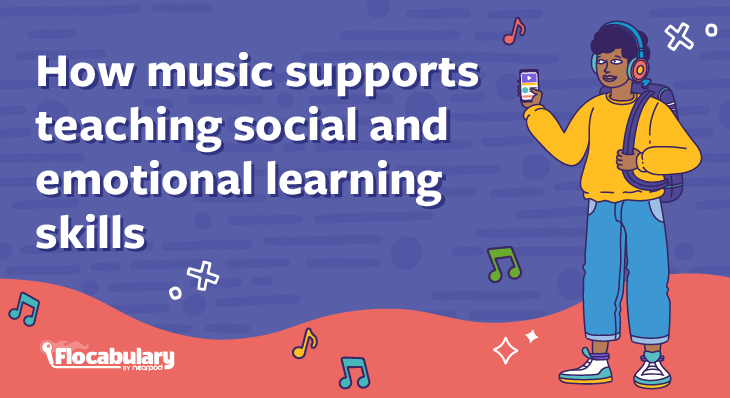
How music supports teaching social and emotional learning skills
Our emotions have long been intertwined with music. I’m sure you have songs that are innately connected to meaningful moments in your life. There is a soundtrack to your breakups and auditory connections from your saddest losses to your greatest victories. And then there are the songs you just can’t help but dance to as they pump you full of energy. That is why I have made sure to take dance breaks with my students and even bust out our own songs about how we’re feeling to support teaching them social emotional skills. To effectively support students’ mental health, school districts should implement strategies that integrate social emotional learning into the core curriculum and daily routines.
These are universal truths we all know, even without understanding endorphins, studying the vast ways music supports learning, or being actively aware of the mood-enhancing chemical it elicits to supercharge our faculties. We know music is therapeutic. We know it motivates us to action, heightens our emotions, and provides an escape from our weariness and troubles. The rhythms of a song mimic our heartbeats and let us know we are still alive and express our feelings in tragedy more than words alone ever could. Tapping into the power of music and its connections to social and emotional learning (SEL) can be incredibly impactful in the classroom. We’ll be exploring how and why SEL music activities can transform learning. Flocabulary makes that easy with K-12 standard-aligned video-based lessons and activities for all core subjects.
Watch the video below to preview the powerful video lessons Flocabulary has to offer.
How can teachers impact learning through Flocabulary’s music?
Flocabulary accelerates student learning by building academic vocabulary and comprehension through rigorous and authentically engaging instructional experiences. These K-12 standard-aligned video-based lessons and activities leverage the power of hip-hop, storytelling, and emotional connections to cultivate literacy across the curriculum. Flocabulary is proven to strengthen a student’s understanding and highly engage them, ultimately leading to improved learner outcomes.
Here are some of the outcomes we’ve seen:
- 91% of students agree that after watching a Flocabulary video, they have a better understanding of what they’re learning
- 95% of educators who use Flocabulary daily or weekly find their students are very or highly engaged with Flocabulary lessons
- 25% increase on state reading tests after using Flocabulary
New to Flocabulary? Teachers can sign up for a trial to access our lesson videos and assessment activities. Administrators can get in touch with us to learn more about unlocking the full power of Flocabulary through Flocabulary Plus.
How music supports teaching social and emotional learning skills
As a musician, an educator of students with autism, and someone on the spectrum himself; I can assure you that music can connect to deep places in our brains that simple words cannot. You don’t need to read my horrendously boring master’s thesis on the benefits of atonal music for decreasing stimming behaviors to know music’s power. You just hit play on that stereo and simply look at the reaction on the faces of children with developmental delays or who have experienced trauma, and you immediately know its impact.

I live in Queens, NY, America’s most diverse county, and I teach in New York City’s District 75, citywide special education for students with moderate to higher needs disabilities. My city and my district were hit harder than anywhere else early in the pandemic. And, of course, we’ve heard the discussions about students faltering with what some deemed subpar instruction in those moments we were at a distance.
Is it worth spending the limited instruction time we have to teach about music and social connections?
As much as the staff, the children, and their families were suffering here from our very real personal losses, how could we not incorporate the social and emotional needs of the community into our everyday practices? Anything else would’ve rung hollow, and any attempt at “normal learning” would’ve been severely hampered by the real stress we were all feeling. We, like many others, entered the world of pandemic SEL. Fortunately, we were already well-equipped with my district’s subscription to Flocabulary and Nearpod, which proved invaluable during distance learning. We didn’t know what we would need, but I will say that the responsiveness of a company like Flocabulary to my district’s specific student provided a little light in a dark moment. They had also come up with new ways to make the platform more accessible for our special education students, and I had hoped that we could build on that to meet any structural or emotional needs of our families.
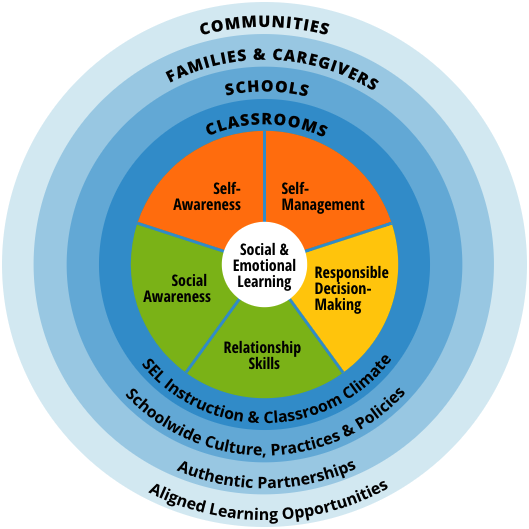
What is social and emotional learning (SEL), and why is it important?
Effective SEL programs improve academic performance and positive behaviors while teaching valuable interpersonal and intrapersonal skills that will be needed throughout a student’s life. That’s why they’re worthwhile. As for how they work, it varies based on the age and needs of students. Most programs, though, are built around the original CASEL framework and delve into the five key social emotional skills of self-awareness, self-management, social awareness, relationship skills, and responsible decision-making.
Beyond that, most programs seek to provide a safe environment for open discussion while allowing for choice. The programs attempt to challenge students in a manner that will help instill confidence and promote collaboration. In the end, the most effective thing any SEL instructor can do is be an active example of positive behavior to students.
Value your students by connecting the power of music with SEL activities and moments
Now, here we are amid an experience like no other. As adults, we are still struggling to navigate it emotionally. How do we respond to the loss of loved ones, isolation, or a sense of sorrow at the state of the world? If we aren’t sure of the answer, how can young people with their still-developing brains know how to avoid the emotional pitfalls? Since music and emotion are already intertwined, it only makes sense to use one when confronting the other. Any instruction in social and emotional learning environments should incorporate music. This approach can be applied not only in music classrooms or early childhood settings but also in a variety of other educational contexts.
Taking brief class breaks for the class to engage in musical TikTok trends hasn’t succeeded in making me fire (along with my attempting to use the phrase fire), but it has fostered meaningful connections between my students and myself. Those brief moments of goofiness while connecting and reflecting on our genuine emotional states did so much more for fostering learning throughout the rest of the school day than any review would have. That connection is where all good teaching begins. You cannot be effective if you don’t know your students well. And giving the students choices in music, even if it’s connected to an entirely separate academic activity (listening to a song while doing group work), demonstrates how you value the students. Challenge them to choose a song connected to their current feelings or the activity they’re engaged in. Beyond that, have them create a song (more on that using Flocabulary below).
I also need to connect to a broad array of musical cultures as well, especially those that are meaningful to our students. Some may like pop music, and others love Pinoy or Bachata from their native countries. It’s important to know your students well enough to tap into all of that.
I believe everyone will soon come to realize that our arts educators are the secret weapon to the implementation of Social Emotional Learning in our schools.
Dr. Maurice Elias
Empower students as creators through music
Ultimately, we want our students to become creators. In Odessa, Texas, a town renowned for football and a marching band, students were struggling to persevere during the pandemic, and morning marching band practice was the only thing that kept some high school students attending class. The music is tied to the students’ social connections and their entire concept of the value of school. Music is connected to and remains a part of our cultural, spiritual, and social identities. One of the best Musical Social Emotional Learning (MSEL) experiences my classes had, even while we were remote, was to create music mash-ups or original songs. Yes, I had a home full of professional instruments, but we had fun gathering materials and creating our own homemade instruments. Also, it was equitable because it didn’t take much. Some Pringles cans or a couple of spoons would work. I was even able to drop off materials for the students who were in shelters.
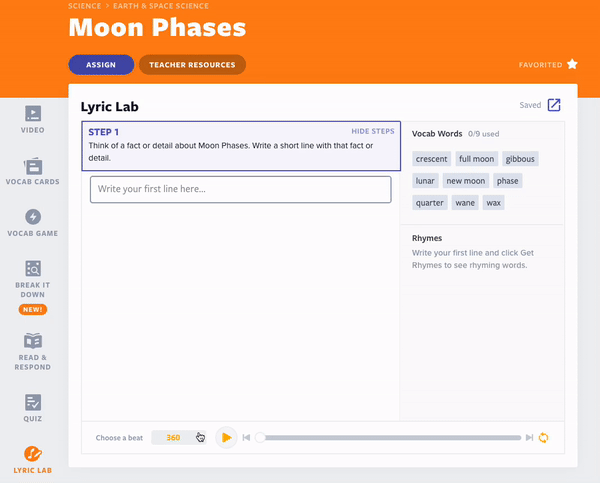
Then, we utilized Flocabulary’s Lyric Lab to construct lyrics about topics we reviewed using its background beats, vocabulary words, and rhyme generator. Two topics we often connected back to were the ones on Building Empathy and Active Listening, which were social emotional skills the students with autism often struggled with but were of greater importance during the pandemic. And I saw, as they played and sang, the light on their faces of an experience that would be remembered beyond any lesson I taught that year. Music can be an escape and joy as well.
Social emotional learning (SEL) music activities and resources
You don’t have to build a class symphony or anything to engage in meaningful MSEL. There are a number of resources available. Students can mix music and social emotional development by listening to a piece of music and interpreting their feelings, like in the “Turn Off the News” example lesson. “The Center for Arts Education and Social Emotional Learning (ArtsEdSEL) is a wonderful hub that walks students through the five SEL skills through artistic creation, performance, response, and connection.
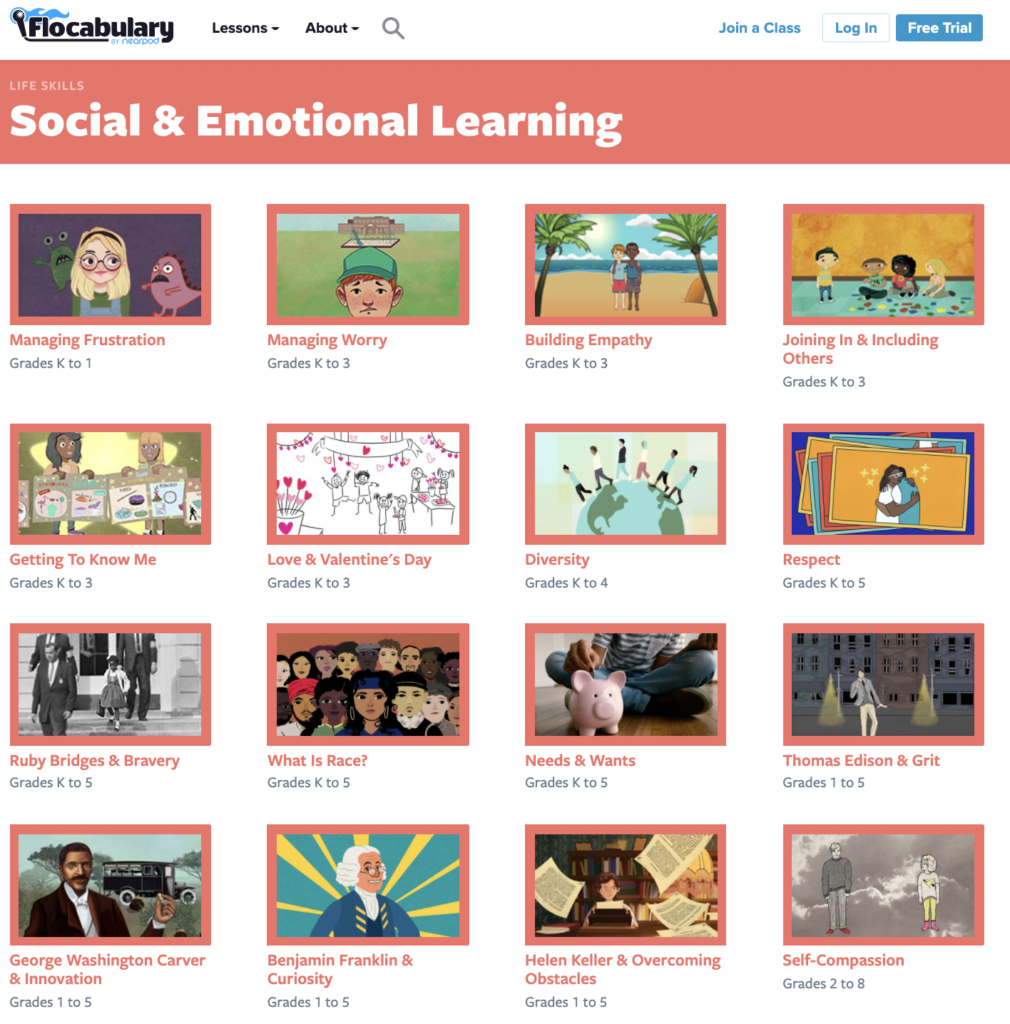
Music and art are made to challenge the status quo, and it was made even easier for my students through Flocabulary. It offers authentically engaging content for K-12 subjects through hip-hop music, vocabulary, storytelling, inclusivity, and visual art. In addition, there is an entire Life Skills section that covers topics related to social emotional learning skills, health and wellness, and social justice. Beyond that, the Lyric Lab provides a space that makes it easy for my students to begin to create their own songs connected to whatever topic we’re exploring. It is inclusive for all students with Immersive Reader and a number of other accessibility features built into the platform. Those are the kinds of tools that help my life a little bit easier as a teacher of students with disabilities.
A post-pandemic world calls for meaningful and equitable social emotional skills
Amid personal losses, economic hardships, and social upheaval, many schools are taking a renewed look at innately connecting social emotional learning into their learning programs. There is value in teaching the whole person and valuing character and not just instructing in isolated topics, which was recognized long ago by ancient scholars like Plato and Confucius. But we can’t get caught up in some lightly painted-over SEL on top of an otherwise mundane curriculum. That will not suffice.
When we dive into social awareness and conflict resolution, if we do it without considering the broader cultural connections and history of injustice for our Black, Indigenous, or other students of often marginalized groups, then we do a disservice to everyone. We can’t just make SEL in the classroom about everyone being colorblind friends because that ignores the world our students currently experience. We must dive into a meaningful exploration of our broader sociopolitical context, and we can even tie it to larger restorative justice initiatives happening within our organization. Then we can empower practices fueled by real data on behavioral and academic outcomes in the school in a manner that is connected to the larger goals and vision of the school.
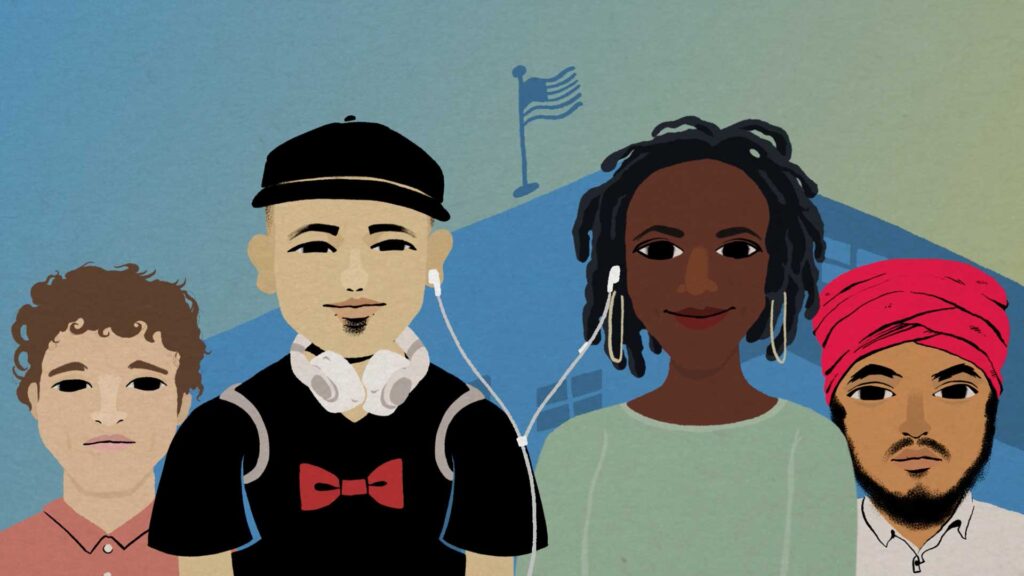
Sure, it’s difficult to know where to begin. But I was again able to look to Flocabulary with a range of diverse artists in their songs, a lens towards equity and inclusion, and a series of lessons and guides about racial equity and social justice to provide a starting point for difficult but necessary discussions. It’s in these moments, when we integrate music education and social emotional learning into our approach, that we can truly reach and support students who are often underserved by the traditional, standardized model of education.
Start teaching social emotional skills with music
I encourage you to actively engage in teaching SEL, as this approach can profoundly impact your struggling students by addressing their social and emotional needs. By helping them learn through music, you provide students with a unique and engaging way to develop essential life skills. The combination of implementing SEL and music not only enhances their academic journey but also equips them with the tools to create a lifelong soundtrack of success, empowering them to thrive both inside and outside the classroom.
New to Flocabulary? Teachers can sign up for a trial to access our lesson videos and assessment activities. Administrators can get in touch with us to learn more about unlocking the full power of Flocabulary through Flocabulary Plus.
